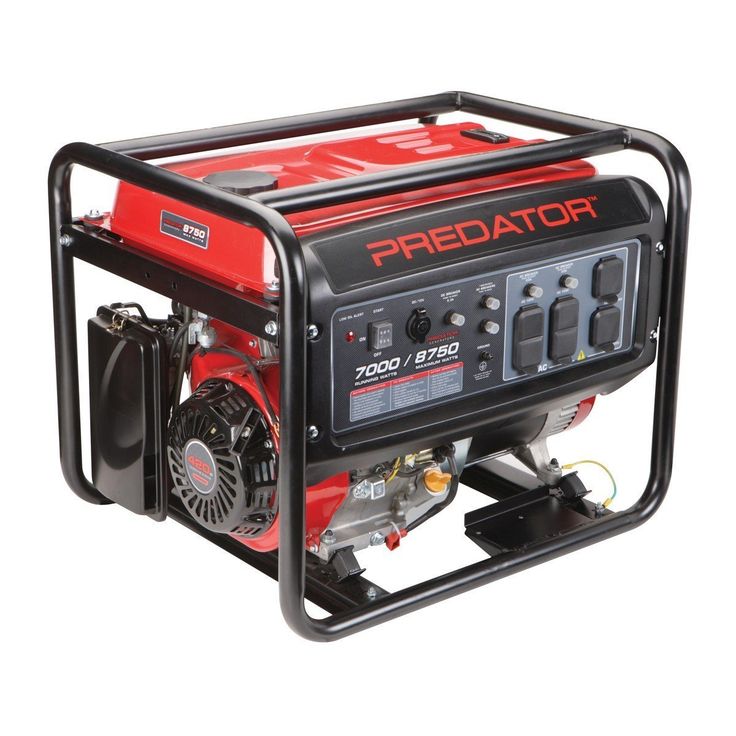This is the Gasoline Used in Predator Generator (Avoid Fuel Issues)
Most generator issues stem from improper fueling practices, such as using the wrong sort of gas or leaving it remain in the generator for extended periods of time.
Unleaded gasoline having an octane rating of 87 or higher and no more than 10% ethanol content is required for use in Predator generators.
You should exercise caution when refueling the generator. Do not attempt to replenish the generator until it has cooled down. In case the tank is pressurized, the cap should be removed slowly. Fill up in a well-ventilated place apart from anything that could catch fire.
Table of Contents
How to Choose the Best Gas for Your Predator’s Generator
New gasoline with a low ethanol content is ideal for your Predator generator’s fuel needs. I also think it’s a good idea to use a fuel additive to lessen the potential damage to the engine and fuel system that fuel itself can cause.
Reduced Amounts of Ethanol
The addition of ethanol to gasoline makes both fuels cleaner burning and less harmful to the environment. Due to its origin from a sustainable resource like maize or similar plant rich in starch, it has a long shelf life.
This item has a built-in ability to wick humidity from the atmosphere. It is possible that varnish and gummy deposits caused by the separation of water and ethanol from gas could impede fuel flow and accelerate component degradation.
This mash will eventually settle to the bottom of the gasoline tank, where it will be subjected to intense heat as it makes its way through the engine.
Ethanol has been shown to cause damage to the fuel system and the engine, therefore it’s best to stick to gas with no more than 10% ethanol in it.
Avoid using E15, E30, and E85 fuel. Ethanol content ranges from 15 to 30 to 85 percent in these fuels.
Use New Gasoline
After only 30 days, the quality of the gas you bought starts to decline. Don’t buy more gas than you can use up in a month’s time.
I realize how challenging this suggestion is. Most individuals just have a generator on hand in case of power outages or other emergencies, and they rarely turn it on. It’s tough to predict when you’ll need to turn on the generator.
This is why, just in case I end up not using the fuel right away, I always make sure to add a fuel stabilizer to it.
Use a Fuel Stabilizer
Stabilize gasoline with a fuel additive while it is still new. A fuel stabilizer will not fix gas that has been sitting around for a while.
In every gas tank, I put in a bottle of Sea Foam Motor Treatment. Sea Foam not only cleans the fuel system and minimizes moisture, but it also stabilizes gas for up to two years.
It lessens the severity of issues that can arise from using gas with ethanol in it. STA-BIL is an additional effective gasoline additive choice.
Non-Ethanol Fuel (Optional)
To protect the generator from ethanol’s harmful effects, switch to a gas that doesn’t contain it. Ethanol-free gas is the most cost-effective fuel for your Predator generator, but it is also the most expensive.
In some areas, you can find gas that doesn’t include ethanol. It’s marketed as REC-90, or recreational fuel.
Such 4-cycle fuel from TruFuel is available in canisters at your neighborhood hardware shop or online. Having the canisters on hand is a time-saver.
Hints on Buying and Storing Gas for Your Predator Generator
A Predator generator may have issues starting and running if the wrong type of gas or outdated gas is used in it. For more efficient gas selection and storage, consider the following.
- Fresh gas should be used, and it should be used up, within 30 days.
- Utilize unleaded petrol with an octane value of 87 or higher and no more than 10% ethanol.
- If you won’t be using gas within 30 days, you should add a fuel stabilizer.
- Keep gas in a cold, dry place, out of the reach of children and far from anything that could catch fire.







